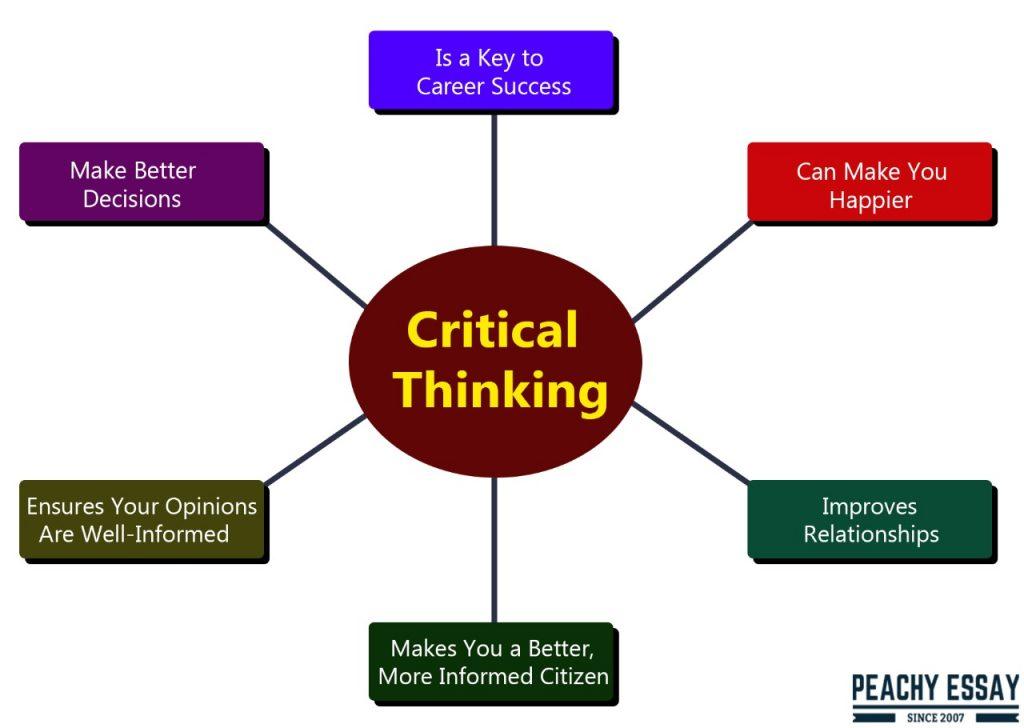Fostering Critical Thinking Skills at Home

Welcome to the ultimate crash course in turning your living room into a fact-checking, truth-seeking, critical thinking dojo. Because let’s be honest, in a world overrun by fake news, alternative facts, and viral hoaxes, sometimes you need to sharpen your critical thinking skills just to survive a conversation with your conspiracy theory-loving Uncle Larry. So grab a pen, a paper, and a healthy dose of skepticism, as we embark on a journey to foster critical thinking skills right in the comfort of your own home.
Benefits of Developing Critical Thinking Skills
So, you wanna develop some killer critical thinking skills, huh? Well, let me tell you, it’s gonna be worth it! Here are some of the amazing benefits you can expect:
First off, **better decision-making**. Yep, that’s right. When you’ve got those critical thinking skills on point, you’ll be making decisions like a boss. You’ll be able to weigh up the pros and cons, consider different perspectives, and make choices that actually make sense. No more flipping a coin or relying on your lucky rabbit’s foot!
Next up, **improved problem-solving abilities**. Say goodbye to being stumped when faced with a tricky situation. With your critical thinking skills in tow, you’ll be able to analyze the problem, come up with creative solutions, and tackle challenges head-on. Sudoku puzzles? Bring ‘em on!
And let’s not forget about **increased creativity**. Yep, critical thinking can actually boost your creative juices. When you’re able to think outside the box, connect the dots, and think critically about different ideas and concepts, you’ll be amazed at the innovative solutions you can come up with. Who needs a brainstorming session when you’ve got critical thinking skills like these?

Incorporating Critical Thinking into Everyday Activities
Who says critical thinking has to be reserved for the classroom? You can incorporate it into your everyday activities with just a little bit of effort!
Next time you’re grocery shopping, challenge yourself to evaluate the nutritional content of the items you’re buying. Take a closer look at the ingredients list and consider if you could make healthier choices.
When watching TV or scrolling through social media, don’t just passively consume content. Take a moment to question the information being presented to you. Is it accurate? Is there evidence to support it? Practice discerning between fact and opinion to sharpen your critical thinking skills.
And finally, don’t forget to apply critical thinking to your interactions with others. Before jumping to conclusions or making assumptions, take the time to consider different perspectives and gather all the facts. You’ll be amazed at how much more smoothly your relationships can flow when you approach them with a critical eye!

Encouraging Questioning and Problem-Solving
So you want to encourage questioning and problem-solving, huh? Well, strap in because we’re about to embark on a wild ride filled with curiosity and brain teasers!
First things first, you’ve got to create an environment that fosters questioning. That means no more shutting down inquiries with a simple “Because I said so.” Embrace the unknown and get ready for some mind-bending inquiries!
Next up, let’s talk problem-solving. It’s time to unleash your inner Sherlock Holmes and tackle those puzzles head-on. Don’t be afraid to think outside the box and try new approaches. Remember, there’s no such thing as a silly solution – well, maybe a few, but we won’t judge!
And lastly, don’t forget to celebrate those lightbulb moments when a question is answered or a problem is solved. High-fives all around! Who knew being a questioning problem-solver could be so much fun?

Creating a Supportive Learning Environment
When it comes to , it’s all about setting the stage for success. From providing the tools and resources students need to fostering a sense of community and collaboration, every little detail counts. Here are some tips to help you create an environment where students can thrive:
- Encourage open communication: Make sure students feel comfortable sharing their thoughts and ideas with each other and with you. This can help foster a sense of trust and collaboration.
- Provide clear expectations: Make sure students know what is expected of them and provide them with clear guidelines for success. This can help reduce anxiety and confusion.
- Offer support when needed: Be proactive in offering support to students who may be struggling. Whether it’s extra help in a certain subject or emotional support, it’s important to let students know that you are there for them.
Remember, is not just about the physical space – it’s also about creating a positive and nurturing atmosphere where students feel valued and respected. By following these tips, you can help create an environment where students feel empowered to succeed and reach their full potential.

Teaching Children to Evaluate Information
When , it’s important to stress the importance of fact-checking and not believing everything they read. One fun way to do this is by playing a game of “Fact or Fiction” where you present them with various statements and they have to determine if it’s true or false. This will help them develop critical thinking skills and learn to question the validity of information.
Another tip is to teach kids about reliable sources of information. Encourage them to look for information from reputable websites, books, and experts in the field. Remind them that just because something is on the internet doesn’t mean it’s true – after all, I once read that pigs can fly on a website!
It’s also important to talk to children about bias and how it can affect the information they receive. Discuss how different sources may have their own agendas and may present information in a way that benefits them. Teach them to look for multiple perspectives and consider all sides of an argument before forming an opinion.
Finally, remind kids that it’s okay to ask questions and seek clarification if they’re unsure about something. Encourage them to dig deeper and not just accept information at face value. By teaching children these skills, you’ll help them become savvy consumers of information in a world full of misleading content and fake news.
Utilizing Socratic Questioning Techniques
So you want to be a master of Socratic questioning, huh? Well, you’ve come to the right place! Let me tell you, is like a game of mental chess – except instead of kings and queens, you’ve got open-ended questions and critical thinking skills. Trust me, once you start incorporating these techniques into your conversations, you’ll be the star of every dinner party!
One of the key principles of Socratic questioning is to challenge assumptions. And what better way to do that than by playing devil’s advocate? Make your conversation partner squirm with questions like:
- “What if everything you know is wrong?”
- “Have you considered that your cat might be plotting world domination?”
Another fun technique to try is rephrasing questions. It’s like a linguistic backflip! Instead of asking a straightforward question, try throwing a curveball with a rephrased version. For example:
- “Why do you think pineapples are yellow?” becomes “What do you think influences the color of pineapples?”
- “Do aliens exist?” becomes “What evidence would convince you that aliens exist?”
Fostering Independence and Creativity in Critical Thinking
When it comes to , the key is to encourage individuality and open-mindedness. Instead of following the crowd, dare to think outside the box and question the status quo. By nurturing a sense of independence, you’ll be able to cultivate a unique perspective that challenges conventional wisdom.
One way to spark creativity in critical thinking is to embrace uncertainty and explore different viewpoints. Don’t be afraid to consider alternative possibilities and entertain ideas that may seem unconventional. Remember, creativity thrives in an environment of diversity and openness.
Another important aspect of is to engage in activities that stimulate your imagination. Whether it’s through art, music, or literature, find ways to tap into your creative potential and unleash your inner genius. Don’t be afraid to take risks and experiment with new ideas – who knows, you might just stumble upon a groundbreaking discovery!
So, let your creative juices flow and embrace the unknown. By , you’ll not only expand your horizons but also pave the way for innovative solutions to complex problems. Remember, the world is your oyster – it’s up to you to shape it with your unique perspective and imaginative thinking!
FAQs
How can I encourage critical thinking in my children without boring them?
Who said critical thinking has to be boring? Get your kids engaged by turning critical thinking exercises into games. Create scavenger hunts that require problem-solving skills, or have them analyze their favorite TV show or book for logic inconsistencies.
What are some ways to incorporate critical thinking skills into daily routines?
Turn everyday tasks into critical thinking exercises. Have your children weigh the pros and cons of different breakfast options or compare prices at the grocery store. Encourage them to think divergently by coming up with multiple possible solutions to a problem.
My children always seem to go with the first solution they think of. How can I help them think more critically?
Challenge your kids to come up with at least three possible solutions to a problem before choosing one. Encourage them to think outside the box by asking questions that prompt them to consider alternative perspectives or approaches.
How can parents foster critical thinking without micromanaging their children’s thought processes?
Give your children autonomy to explore and experiment with their own ideas. Offer guidance and support, but allow them to make mistakes and learn from them. Encourage them to question the status quo and think for themselves.
My kids are resistant to critical thinking exercises. How can I make them more enthusiastic about developing these skills?
Make critical thinking fun by linking it to their interests. If your child loves animals, have them analyze the behavior of their pets. If they enjoy sports, challenge them to come up with strategies for winning a game. Find ways to make critical thinking relevant and engaging for your children.
Happy Thinking!
Keep those little brains ticking with puzzles, discussions, and endless “whys”. Who knows, they might just grow up to be the next big critical thinker of our time. Just kidding, but hey, a little extra brain power never hurt anyone. Thanks for reading, and happy fostering!






